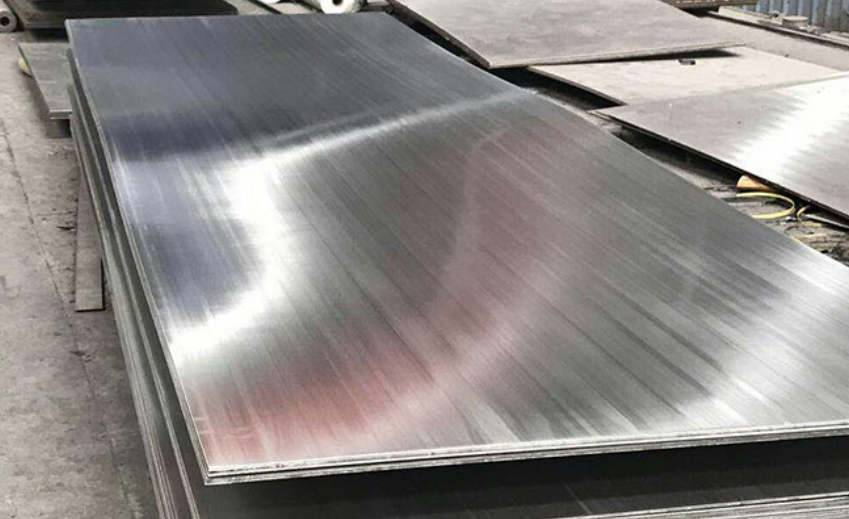304 stainless steel plate is a common stainless steel material with good corrosion resistance and mechanical properties, so it is widely used in various industries. Below we will introduce 5 common processing methods for 304 stainless steel plates, including cutting, bending, welding, polishing, and drilling.

5 Processing Methods for 304 Stainless Steel Plate:
- Cutting:
Cutting is a common processing method for customizing the size and shape of 304 stainless steel plates. Common cutting methods include:
- Cutting: Linear cutting of plates using scissors, shearing machines, and other tools. This is the most common cutting method and is suitable for plates of general size and simple shape.
- Wire saw cutting: Using a wire saw for cutting can achieve curved and complex shape cutting.
- High-energy laser cutting: uses a laser beam to perform high-precision cutting on plates, suitable for pates requiring high precision and complex shapes.
- Bending:
Bending is a method of processing 304 stainless steel plates according to the desired angle and curve shape. Common bending methods include:
- Bending: Use a bending machine to bend the plate at the required angle, allowing for both straight and simple curved bends.
- Roll bending: Using rollers to continuously bend the plate material, it is possible to achieve large radius bends and circular arc shapes.
- Welding:
Welding is a process of joining 304 stainless steel plates by heating them to a molten state using a heat source. Common welding methods include:
- Spot welding: Using arc welding or laser welding for point-to-point connections.
- Melt welding: such as TIG (argon arc welding), MIG (argon shielded welding), arc welding, etc., which uses heat sources to heat the plate and add filler materials for connection.
- Polishing:
Polishing is a process of grinding and polishing the surface of 304 stainless steel plates to achieve a smooth, bright surface effect. Common polishing methods include:
- Mechanical polishing: Using mechanical tools such as grinding wheels and grinding plates to grind and polish the surface of the plate.
- Electropolishing: Using the plate as the anode, the surface oxide layer and defects are removed through the electrolytic process to obtain a smoother surface effect.
- Drilling:
Drilling is a method of hole processing on 304 stainless steel plates to meet the needs of installation, connection, or fixation. Common drilling methods include:
- Drilling with a drill press: Using a drill press to process holes, suitable for processing larger diameters and deeper holes.
- Laser drilling: drilling with high precision and small aperture using a laser beam.
In addition to the above-mentioned processing methods, there are also other special processing methods such as stamping, bending, and stretching. The appropriate processing method should be selected based on specific needs and applications. In short, 304 stainless steel plates have good processing performance and can meet the needs of various industries through cutting, bending, welding, polishing, and drilling.
Conclusion
Thank you for reading our reading our article and we hope it can help you to have a better understanding of the 5 common processing methods for 304 stainless steel plates. If you want to learn more about 304 stainless steel plates, we would advise you to visit Sino Stainless Steel for more information.
As a leading supplier of stainless steel products from China, Sino Stainless Steel offers customers high-quality stainless steel strips, stainless steel coils, stainless steel plates, stainless steel sheets, stainless steel bars, and stainless steel tubes at an extremely competitive price.
 :+86-13012867759
:+86-13012867759  :export86@sino-stainless-steel.com
:export86@sino-stainless-steel.com